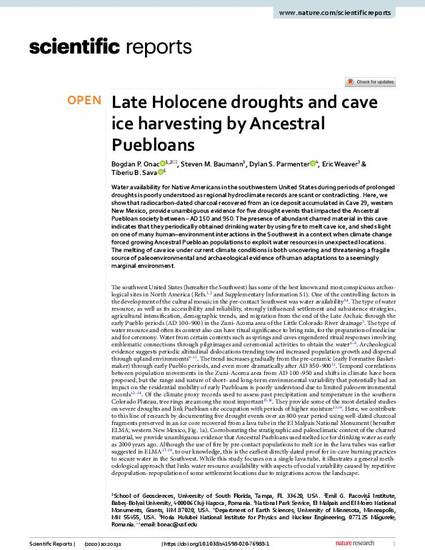
Water availability for Native Americans in the southwestern United States during periods of prolonged droughts is poorly understood as regional hydroclimate records are scant or contradicting. Here, we show that radiocarbon-dated charcoal recovered from an ice deposit accumulated in Cave 29, western New Mexico, provide unambiguous evidence for five drought events that impacted the Ancestral Puebloan society between ~ AD 150 and 950. The presence of abundant charred material in this cave indicates that they periodically obtained drinking water by using fire to melt cave ice, and sheds light on one of many human–environment interactions in the Southwest in a context when climate change forced growing Ancestral Puebloan populations to exploit water resources in unexpected locations. The melting of cave ice under current climate conditions is both uncovering and threatening a fragile source of paleoenvironmental and archaeological evidence of human adaptations to a seemingly marginal environment.
Scientific Reports, v. 10, art. 20131
Available at: http://works.bepress.com/bogdan-onac/208/
